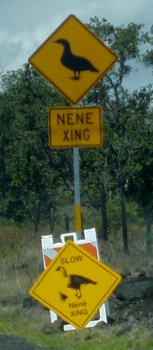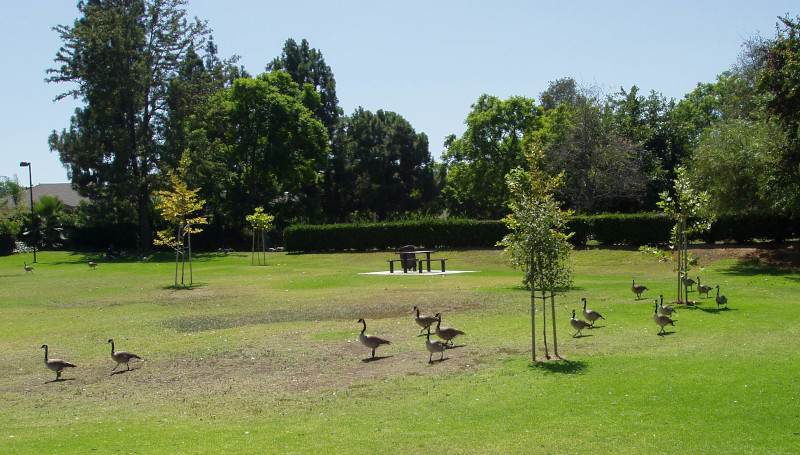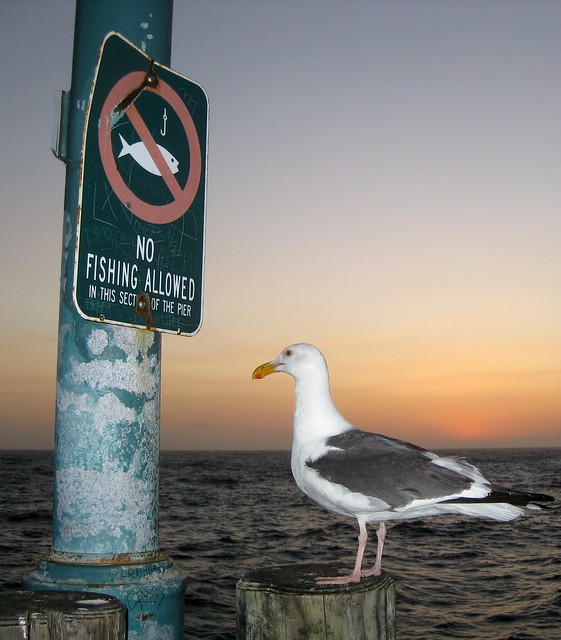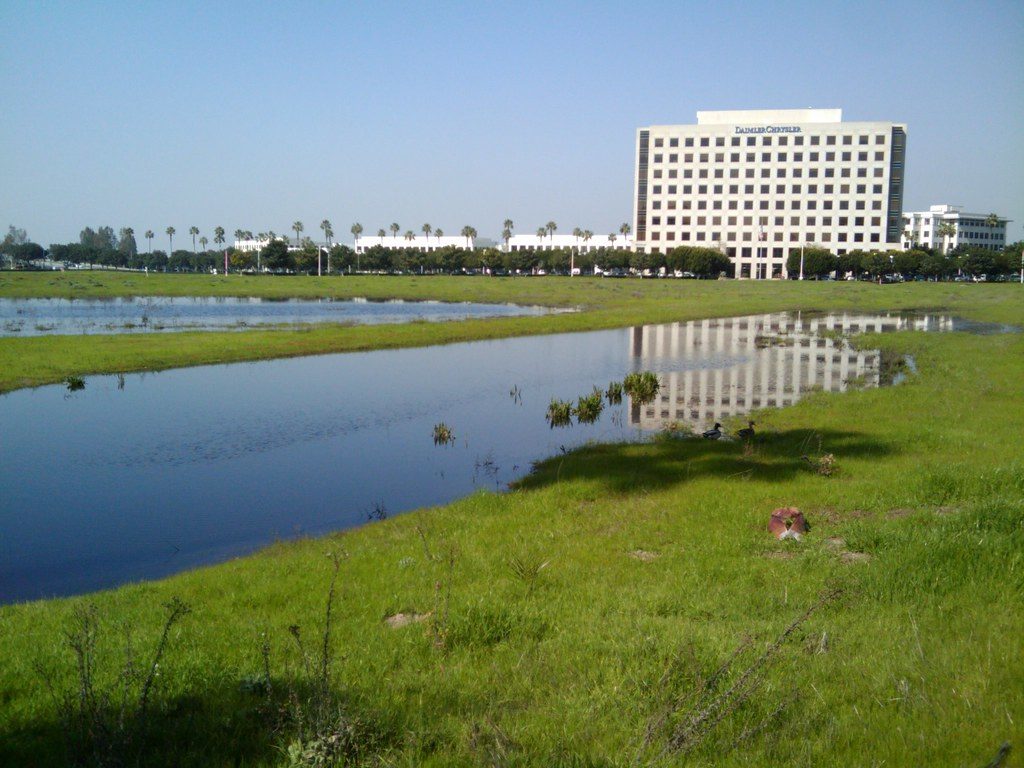“Gee, I hope this doesn’t apply to seagulls, too!”
Tag: birds
Office Park Ponds
There are still a few empty lots in the Irvine Spectrum office park area, and the recent rains have turned them green…and for the first time I remember noticing, filled hollows with water to create temporary ponds. There were even a half-dozen ducks milling about while I took these pictures. Continue reading
Man-Eating Bird
Fossils linked to Maori legend of man-eating bird
The giant Haast’s Eagle, which died out at least 500 years ago, was originally thought to have been a scavenger, but new analysis of fossils indicates that it was a lion-level predator…making it the probable basis for the Maori Te Hokioi legend.
Swoop Warning

Well, that’s encouraging. I mean, nothing makes lunchtime better than worrying you might be about to star in a Hitchcock remake.
Nene Xing
 The Nene (roughly nay-nay), a.k.a. the Hawaiian Goose, is Hawaii’s state bird. It’s also endangered. There’s supposed to be a (comparatively) large population in Hawai‘i Volcanoes National Park, but we didn’t see a single one all week. All we saw were a zillion of these signs warning us to avoid hitting them. Maybe it was the wrong time of year, the wrong time of day, or they’re all hiding away from the road.
The Nene (roughly nay-nay), a.k.a. the Hawaiian Goose, is Hawaii’s state bird. It’s also endangered. There’s supposed to be a (comparatively) large population in Hawai‘i Volcanoes National Park, but we didn’t see a single one all week. All we saw were a zillion of these signs warning us to avoid hitting them. Maybe it was the wrong time of year, the wrong time of day, or they’re all hiding away from the road.
They warn you not to feed the Nenes either. The concern is that it will encourage them to hang out near roads where they’re more likely to be killed. This reminds me of another bird we did see a lot of. Whatever it was, they were either very stupid or very confident in drivers’ abilities to avoid them, because they would just amble across the road, pausing occasionally, making no effort to dodge the cars zooming at them at 35, 45, or 55 MPH. It was several days before we saw one actually bother to fly a few feet!
Ducks… er, make that Geese
There’s a park just past the corner of Elrond and Ridge Route, and as I left that intersection I spotted a flock of about ten rather large ducks (Edit: it has been pointed out to me that most of these are actually Canada geese) walking across the park. I pulled over to start taking pictures, and realized that there were actually dozens of them, wandering around near the small (presumably artificial) lake that gives the park its name, Village Pond Park.

Trekking across the park. Continue reading

